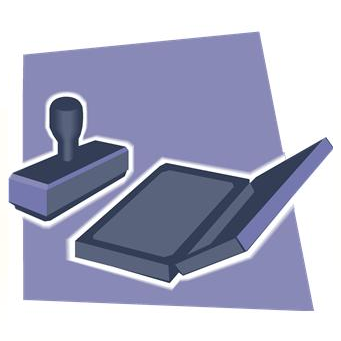This is the seventh of the LegalTech New York (LTNY) Thought Leader Interview series. eDiscoveryDaily interviewed several thought leaders at LTNY this year and asked each of them the same three questions:
- What do you consider to be the current significant trends in eDiscovery on which people in the industry are, or should be, focused?
- Which of those trends are evident here at LTNY, which are not being talked about enough, and/or what are your general observations about LTNY this year?
- What are you working on that you’d like our readers to know about?
Today’s thought leader is George Socha. A litigator for 16 years, George is President of Socha Consulting LLC, offering services as an electronic discovery expert witness, special master and advisor to corporations, law firms and their clients, and legal vertical market software and service providers in the areas of electronic discovery and automated litigation support. George has also been co-author of the leading survey on the electronic discovery market, The Socha-Gelbmann Electronic Discovery Survey. In 2005, he and Tom Gelbmann launched the Electronic Discovery Reference Model project to establish standards within the eDiscovery industry – today, the EDRM model has become a standard in the industry for the eDiscovery life cycle and there are eight active projects with over 300 members from 81 participating organizations. George has a J.D. for Cornell Law School and a B.A. from the University of Wisconsin – Madison.
What do you consider to be the current significant trends in eDiscovery on which people in the industry are, or should be, focused?
On the very “flip” side, the number one trend to date in 2011 is predictions about trends in 2011. They are part of a consistent and long-term pattern, which is that many of these trend predictions are not trend predictions at all – they are marketing material and the prediction is “you will buy my product or service in the coming year”.
That said, there are a couple of things of note. Since I understand you talked to Tom about Apersee, it’s worth noting that corporations are struggling with working through a list of providers to find out who provides what services. You would figure that there is somewhere in the range of 500 or so total providers. But, my ever-growing list, which includes both external and law firm providers, is at more than 1,200. Of course, some of those are probably not around anymore, but I am confident that there are at least 200-300 that I do not yet have on the list. My guess when the list shakes out is that there are roughly 1,100 active providers out there today. If you look at information from the National Center for State Courts and the Federal Judicial Center, you’ll see that there are about 11 million new lawsuits filed every year. I saw an article in the Cornell Law Forum a week or two ago which indicated that there are roughly 1.1 million lawyers in the country. So, there are 11 million lawsuits, 1.1 million lawyers and 1,100 providers. Most of those lawyers have no experience with eDiscovery and most of those lawsuits have no provider involved, which means eDiscovery is still very much an emerging market, not even close to being a mature market. As fast as providers disappear, through attrition or acquisition, new providers enter the market to take their place.
Which of those trends are evident here at LTNY, which are not being talked about enough, and/or what are your general observations about LTNY this year?
{Interviewed on the second afternoon of LTNY} Maybe this is overly optimistic, but part of what I’m seeing in leading up to the conference, on various web sites and at the conference itself, is that a series of incremental changes taking place over a long period are finally leading to some radical differences. One of those differences is that we finally are reaching a point where a number of providers can make the claim to being “end-to-end providers” with some legitimacy. For as long as we’ve had the EDRM model, we’ve had providers that have professed to cover the full EDRM landscape, by which they generally have meant Identification through Production. A growing number of providers not only cover that portion of the EDRM spectrum but have some ability to address Information Management, Presentation, or both By and large, those providers are getting there by building their software and services based on experience and learning over the past 8 to 10 to 12 years, introducing new offerings at the show that reflect that learned experience.
A couple of days ago, I only half-jokingly issued “the Dyson challenge” (as in the Dyson vacuum cleaner). Every year, come January, our living room carpet is strewn with pine tree needles and none of the vacuum cleaners that we have ever had have done a good job of picking up those needles. The Dyson vacuum cleaner claims it cyclones capture more dirt than anything, but I was convinced that could not include those needles. Nonetheless I tried, and to my surprise it worked like a charm! I want to see the providers offering products able to perform at that high level, not just meeting but exceeding expectations.
I also see a feeling of excitement and optimism that wasn’t apparent at last year’s show.
What are you working on that you’d like our readers to know about?
As I mentioned, we have launched the Apersee web site, designed to allow consumers to find providers and products that fit their specific needs. The site is in beta and the link is live. It’s in beta because we’re still working on features to make it as useful as possible to customers and providers. We’re hoping it’s a question of weeks, not months, before those features are implemented. Once we go fully live, we will go two months with the system “wide open” – where every consumer can see all the provider and product information that any provider has put in the system. After that, consumers will be able to see full provider and product profiles for providers who have purchased blocks of views. Even if a provider does not purchase views, all selection criteria it enters are searchable, but search results will display only the provider’s name and website name. Providers will be able to get stats on queries and how many times their information is viewed, but not detailed information as to which customers are connecting and performing the queries.
As for EDRM, we continue to make progress with an array of projects and a growing number of collaborative efforts, such as the work the Data Set group has down with TREC Legal and the work the Metrics group has done with the LEDES Committee. We not only want to see membership continue to grow, but we also want to continue to push for more active participation to continue to make progress in the various working groups. We’ve just met at the show here regarding the EDRM Testing pilot project to address testing standards. There are very few guidelines for testing of electronic discovery software and services, so the Testing project will become a full EDRM project as of the EDRM annual meeting this May to begin to address the need for those guidelines.
Thanks, George, for participating in the interview!
And to the readers, as always, please share any comments you might have or if you’d like to know more about a particular topic!








